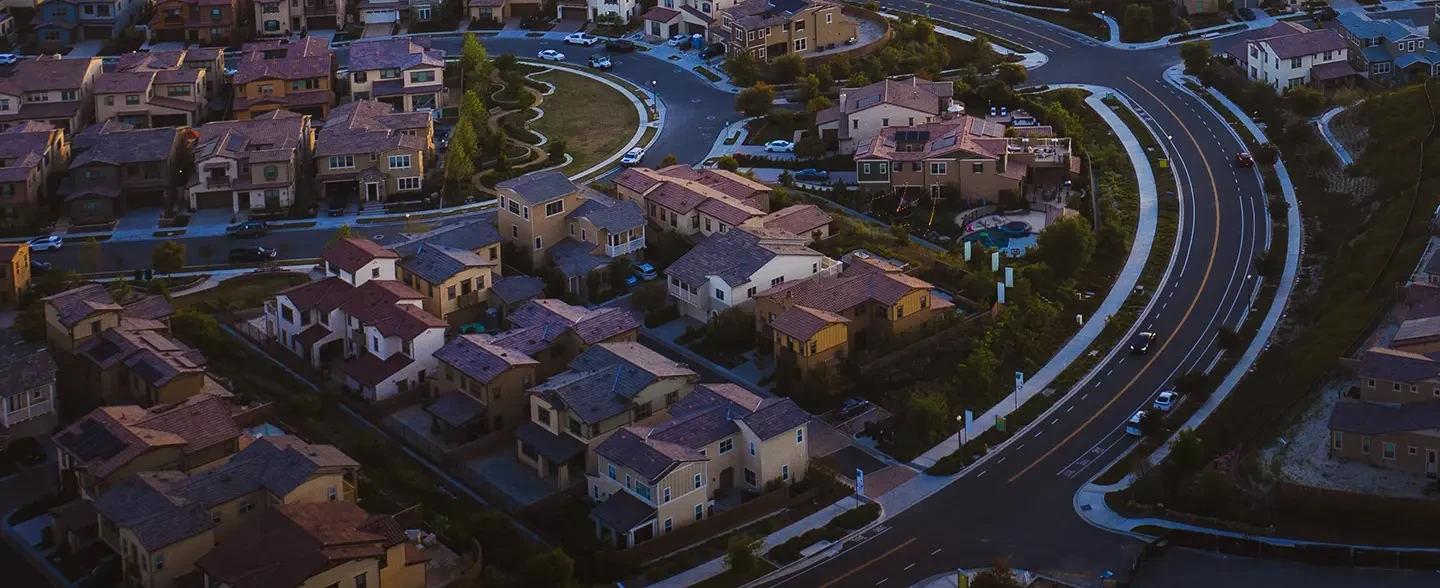In California, homeowners associations (HOAs) play a pivotal role in maintaining common areas and ensuring the smooth operation of community living. However, disputes often arise over who is responsible for various maintenance tasks, especially when it comes to shared spaces, repairs, and damages.
Whether you're facing water damage, unclear repair obligations, or questions about common area upkeep, understanding the legal division of duties is crucial. Fortunately, California law offers protections to homeowners, ensuring that maintenance responsibilities are clearly defined. At LS Carlson Law, we specialize in helping homeowners navigate these complexities, providing expert guidance and dedicated legal support in these matters.
Understanding HOA Maintenance Responsibilities in California
In California, the division of responsibilities between homeowners and HOAs is outlined in the governing documents of each community association. These documents, typically including the Declaration of Covenants, Conditions, and Restrictions (CC&Rs), as well as the association’s bylaws, set the framework for how maintenance tasks are assigned. The general rule is that HOA maintenance responsibilities apply to common areas, while homeowners are responsible for maintaining their units.
However, the breakdown isn’t always so clear-cut, especially when it comes to shared systems like plumbing, roofing, and HVAC systems. The California common area maintenance rules specify that the HOA must handle repairs in areas like hallways, lobbies, elevators, and the exterior of buildings. At the same time, homeowners may be required to maintain exclusive use areas, like balconies or patios, even though these are technically part of the common area.
HOA Repair Obligations: What’s Included?
One of the most significant responsibilities an HOA holds is common area maintenance. The HOA is generally expected to maintain and repair areas accessible to all residents, including landscaping, walkways, parking lots, and amenities like pools or recreational facilities. The HOA repair obligations also extend to the structural integrity of shared buildings, which can include roof replacements and exterior painting.
That said, the HOA’s duty to maintain does not cover everything. For instance, if there is a problem inside a homeowner’s unit (e.g., a malfunctioning furnace or plumbing), the homeowner is typically responsible for those repairs. However, if the problem originates from shared systems (such as a plumbing issue affecting multiple units), the HOA may need to step in. Water damage responsibility for HOA can be tricky, as it often depends on whether the source of the leak originates from the homeowner's unit or a common area.
Exclusive Use Common Area Maintenance
A unique aspect of HOA maintenance responsibilities in California is the concept of exclusive-use common areas. These areas are part of the shared property but are designated for the exclusive use of a specific homeowner. Examples might include patios, balconies, or parking spaces.
Under California law, while these areas remain technically part of the common area, homeowners are generally responsible for the maintenance and upkeep of these spaces. For example, if a balcony requires repairs or the landscaping around a designated parking space needs attention, the homeowner may be required to handle these repairs, often at their own expense.
Homeowner vs. HOA Maintenance Duties: Clarifying the Lines
One of the most common points of confusion between homeowners and HOAs is the allocation of maintenance duties. The homeowner vs HOA maintenance duties issue can create tension, especially when there is ambiguity over responsibility. For example, while a homeowner is usually in charge of maintaining the interior of their unit, there may be disagreements about whether the HOA should repair the exterior windows or if that falls to the homeowner.
California's Davis-Stirling Act sets the guidelines for resolving these disputes by clearly defining the scope of the HOA’s maintenance obligations. However, homeowners should always consult the California HOA maintenance matrix, which provides specific rules about shared property and maintenance duties. In many cases, maintenance decisions can be subject to the HOA board’s discretion, provided the board adheres to the established rules and makes decisions in the best interest of the community.
Preventative Maintenance and Reserve Funds
A well-run HOA should be proactive in addressing long-term maintenance needs. Preventive maintenance can help prevent costly repairs down the road, such as regular roof inspections or HVAC system checks. The HOA’s reserve fund is key to these efforts, ensuring that enough money is set aside to cover major repairs or replacements.
If an HOA fails to adequately maintain shared areas or address repairs, homeowners may be able to take legal action, including seeking damages or forcing the HOA to make necessary repairs. California law protects homeowners from the repercussions of an HOA’s failure to meet its obligations, and in some cases, legal action may be required to resolve serious issues.
Dispute Resolution and Remedies for Homeowners
When disagreements arise about maintenance responsibilities, California provides a framework for dispute resolution. This process may involve internal mechanisms, like mediation or arbitration, to resolve issues between homeowners and the HOA. If disputes can’t be resolved at the community level, homeowners can turn to the courts to enforce their rights.
The Civil Code Section 4775 outlines the procedures homeowners must follow in the event of a dispute, ensuring that the process is as straightforward and fair as possible. In situations where repairs or maintenance obligations are in question, legal advice may be necessary to navigate the complexities of the law and protect your property rights.
Water Damage and Other Shared System Issues
One of the most frequent sources of disputes in condo or HOA communities is water damage. Homeowners are often unsure whether they are responsible for damage caused by a leaking pipe or roof, especially when the damage affects both their unit and shared areas. Understanding who bears the responsibility for repairs to shared systems is crucial. If water damage stems from a shared plumbing system or a common roof, the HOA may be obligated to repair the issue.
California law also mandates that HOA governing documents clearly outline the rights and responsibilities of homeowners and the association when it comes to these types of issues. Homeowners should always review these documents carefully and consult with legal experts if they are unsure of their position.
HOA Maintenance Matrix: A Tool for Clarity
To simplify the complex issue of maintenance responsibilities, many HOAs utilize a California HOA maintenance matrix. This document helps homeowners understand which areas are their responsibility and which fall under the HOA’s purview. By reviewing this matrix, homeowners can avoid confusion and ensure that they are up-to-date with maintenance obligations.
Ensuring Proper Maintenance and Protection
Understanding your rights and responsibilities as a homeowner in California’s HOA communities is essential for avoiding costly disputes and ensuring proper maintenance of your property. Whether you're navigating exclusive use common area maintenance or dealing with water damage responsibility, HOA, it's crucial to have a clear understanding of the laws and guidelines in place. If you're facing maintenance challenges or need guidance on HOA responsibilities, we at LS Carlson Law are here to help. Our expertise can provide the support you need to ensure your property rights are protected.

Tell Us About Your HOA Dispute
When you hire LS Carlson Law, you can be assured you’ll be getting an aggressive firm fully dedicated to achieving your legal objectives. Don’t take our word for it, we encourage you to take a look at the numerous five-star client reviews. Call us now or fill out the form to set an appointment.



